
The Melbourne tramway network is a tramway system serving the city of Melbourne, Victoria, Australia. The tramway network is centred around the Melbourne central business district (CBD) and consists of approximately 1,700 tram stops across 24 routes, with more than 500 trams and 250 kilometres of double tram track which served a patronage of 206 million over the year 2017-2018. It is the largest operational urban tram network in the world and one of the most used. Trams are the second most utilised form of public transport in Melbourne after the city's metropolitan commuter railway network.

Veolia Transport was the international transport services division of the French-based multinational company Veolia until the 2011 merger that gave rise to Veolia Transdev, later renamed Transdev. Veolia Transport traded under the brand names of Veolia Transportation in North America and Israel, Veolia Transport, Veolia Verkehr in Germany and with the former name Connex preserved in Lebanon, Melbourne and Jersey.

Adelaide Metro is the public transport system of Adelaide, the capital city of South Australia. It is an intermodal system offering an integrated network of bus, tram, and train services throughout the metropolitan area. The network has an annual patronage of 79.9 million, of which 51 million journeys are by bus, 15.6 million by train, and 9.4 million by tram. The system has evolved heavily over the past fifteen years, and patronage increased dramatically during the 2014–15 period, a 5.5 percent increase on the 2013 figures due to electrification of frequented lines.
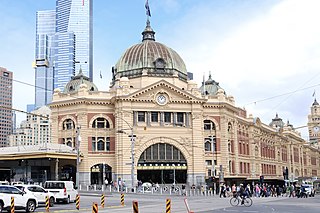
The Melbourne rail network is a metropolitan suburban and freight rail system serving the city of Melbourne, Victoria, Australia. The metropolitan rail network is centred around the Melbourne central business district (CBD) and consists of 221 railway stations across 16 lines, which served a patronage of 99.5 million over the year 2021–2022. It is the core of the larger Victorian railway network, with regional links to both intrastate and interstate rail systems.

Connex Melbourne was a train operator in Melbourne, Australia. Formed in July 1998 as Hillside Trains, a business unit of the Public Transport Corporation, it was privatised in August 1999 becoming a subsidiary of Connex.
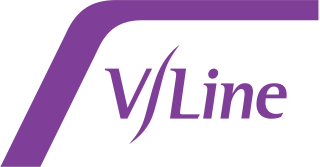
V/Line is a statutory authority that operates regional passenger train and coach services in the Australian state of Victoria. It provides passenger train services on five commuter lines and eight long-distance routes from its major hub at Southern Cross railway station in Melbourne. It also provides bus services across Victoria and into New South Wales, the Australian Capital Territory and South Australia. In addition, V/Line is responsible for the maintenance of much of the Victorian freight and passenger rail network outside of the areas managed by Metro Trains Melbourne and the Australian Rail Track Corporation.

The Hitachi was an electric multiple unit that operated on the Melbourne suburban railway network between 1972 and 2014. Electrical equipment was supplied by Commonwealth Engineering to designs by Hitachi of Japan, leading to their official name today, though no actual Hitachi-supplied components were used in their construction. They were the last suburban trains in Melbourne with no air conditioning. A total of 355 carriages were built between 1972 and 1981, including a replacement carriage for one written off while the fleet was still being delivered.
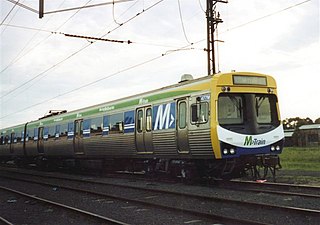
M>Train was a train operator in Melbourne, Australia, and operated some of the city's suburban rail operations. Formed in July 1998 as Bayside Trains, a business unit of the Public Transport Corporation, it was privatised in August 1999 becoming a subsidiary of National Express.

The Victorian Railways (VR), trading from 1974 as VicRail, was the state-owned operator of most rail transport in the Australian state of Victoria from 1859 to 1983. The first railways in Victoria were private companies, but when these companies failed or defaulted, the Victorian Railways was established to take over their operations. Most of the lines operated by the Victorian Railways were of 5 ft 3 in. However, the railways also operated up to five 2 ft 6 in narrow gauge lines between 1898 and 1962, and a 4 ft 8+1⁄2 instandard gauge line between Albury and Melbourne from 1961.

The 3000 class and 3100 class are diesel railcars that operate on the Adelaide rail network. Built by Comeng and Clyde Engineering between 1987 and 1996, they entered service under the State Transport Authority before later being operated by TransAdelaide and Adelaide Metro. Trains are typically coupled as multiple units, though the 3000 class are also able to run as single units when needed.
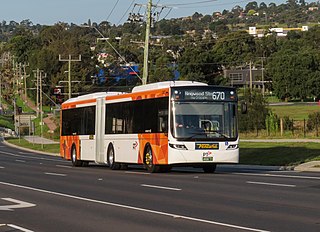
Buses in Melbourne, Australia, are a major form of public transport in Melbourne, with an extensive bus network. There are 346 routes in operation with a varying range of service frequencies, operated by privately owned bus companies under franchise from the State Government. The Night Network bus system consists of 10 routes and operates on Friday and Saturday nights, and a SmartBus orbital bus network currently consisting of nine routes, which is intended to facilitate cross city travel, while the current network is predominantly a radial network. Most of the bus network is a covered by the myki ticketing system.
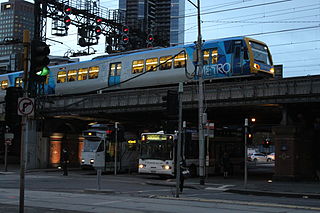
Transport in Melbourne, the state capital of Victoria, Australia, consists of several interlinking modes. Melbourne is a hub for intercity, intracity and regional travel. Road-based transport accounts for most trips across many parts of the city, facilitated by Australia's largest freeway network. Public transport, including the world's largest tram network, trains and buses, also forms a key part of the transport system. Other dominant modes include walking, cycling and commercial-passenger vehicle services such as taxis.

The State Transport Authority (STA) was the government agency which controlled public transport in South Australia between 1974 and 1994.

The Public Transport Commission (PTC) was an agency of the Government of New South Wales responsible for the provision of rail, bus and ferry services in New South Wales, Australia from October 1972 until June 1980.

The Melbourne & Metropolitan Tramways Board (MMTB) was a government-owned authority that was responsible for the tram network in Melbourne, Australia between 1919 and 1983, when it was merged into the Metropolitan Transit Authority. It had been formed by the merger of a number of smaller tramway trusts and companies that operated throughout the city.

A transit district or transit authority is a government agency or a public-benefit corporation created for the purpose of providing public transportation within a specific region.
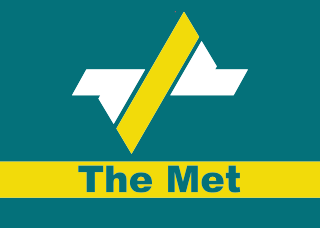
The Public Transport Corporation (PTC) was a Victoria State Government owned statutory authority formed under the Transport Act 1983 which operated passenger and freight trains, trams and bus services.

Keolis Downer is a joint venture between Keolis, the largest private sector French transport group, and Downer Rail, an Australian railway engineering company, that operates bus and tram services in Australia.

The Director of Public Transport was the head of the Public Transport Division (PTD) of the Victorian Department of Transport. PTD was the government agency responsible for promoting, providing, coordinating and regulating public transport in the state of Victoria, Australia between August 1999 and June 2013. The Director of Public Transport was created as a statutory office supported by staff of the Department of Transport.
Frederick Dudley Snell was an Australian electrical engineer and tramways administrator. He grew up in Bendigo and following his education worked for the State Electricity Commission of Victoria. After serving in the Royal Australian Air Force during World War II, he commenced work at the Melbourne & Metropolitan Tramways Board (MMTB) in 1953, being appointed the MMTB's fifth and last Chairman in 1976. Following the dissolving of the MMTB into the Metropolitan Transit Authority (MTA) in 1983, he became General Manager of the MTA Bus and Tram Division. Snell worked for the MMTB, MTA, and Leighton Asia on Hong Kong's Tuen Mun light rail system, and died in Hong Kong in 1988.





















